- Recrutements
- Contacts
- Annuaires
- Choix du langage :
Dernières publications
935.
- titre
- Assessing water quality restoration measures in Lake Pampulha (Brazil) through remote sensing imagery
- auteur
- Alexandre Assunção, Talita Silva, Lino de Carvalho, Brigitte Vinçon-Leite
- article
- Environmental Science and Pollution Research, 2025, ⟨10.1007/s11356-025-35914-6⟩
- titre
- Do suspended particles matter for wastewater-based epidemiology?
- auteur
- Gauthier Bernier-Turpin, Régis Moilleron, Chloé Cenik, Fabrice Alliot, Sabrina Guérin-Rechdaoui, Thomas Thiebault
- article
- Water Research, In press, 280, pp.123543. ⟨10.1016/j.watres.2025.123543⟩
- titre
- Plastic debris dataset on the Seine riverbanks: up to 38 000 pre-production plastic pellets reported per square meter
- auteur
- Romain Tramoy, Laurent Colasse, Johnny Gasperi, Bruno Tassin
- article
- Data in Brief, 2025, pp.111735. ⟨10.1016/j.dib.2025.111735⟩
- titre
- La persistance des champs d’épandage d’eaux usées de l’agglomération parisienne au cours du second XXe siècle
- auteur
- Etienne Dufour
- article
- Métropolitiques, 2025, ⟨10.56698/metropolitiques.2174⟩
- titre
- Stock and vertical distribution of microplastics and tire and road wear particles into the soils of a high-traffic roadside biofiltration swale
- auteur
- Max Beaurepaire, Tiago de Oliveira, Johnny Gasperi, Romain Tramoy, Mohamed Saad, Bruno Tassin, Rachid Dris
- article
- Environmental Pollution, 2025, 373, pp.126092. ⟨10.1016/j.envpol.2025.126092⟩
OSS-Cyano
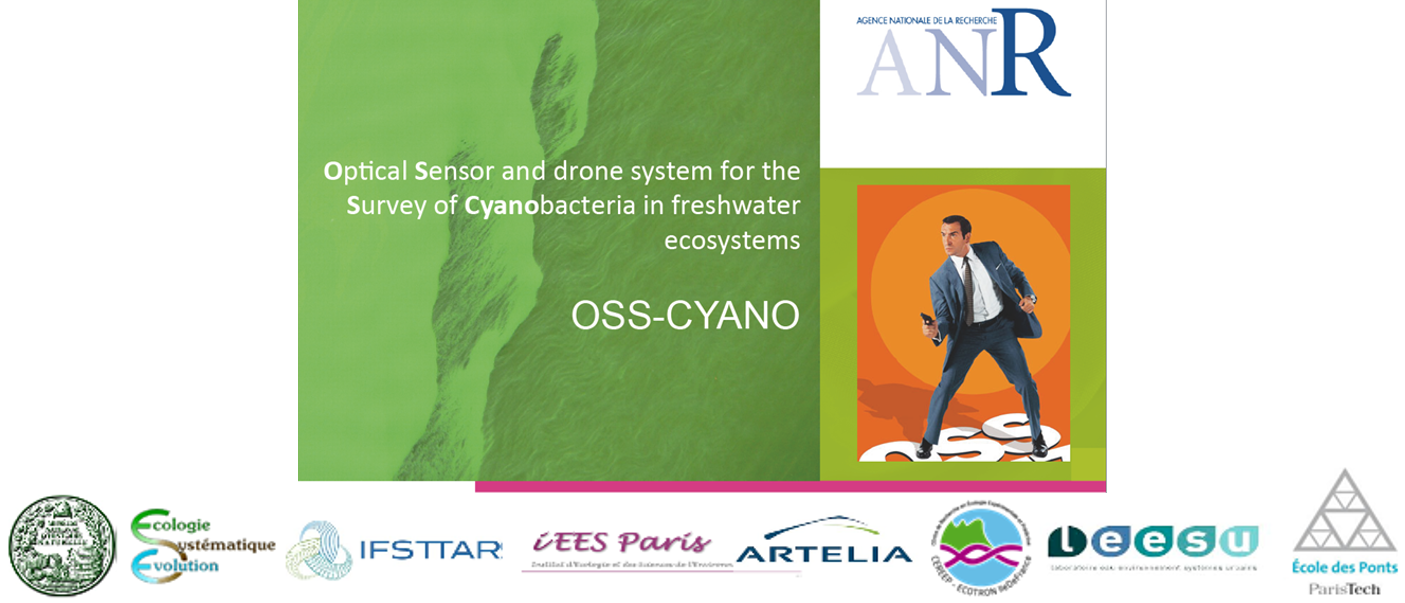
The OSS-Cyano project (2014-2018) is funded by the French Research Agency (ANR Program ECO-TS). Six public laboratories (iEES, LEESU, ESE, IFSTTAR, MNHN and CEREP) and one environmental engineering company (ARTELIA) are participating to the project.
Contact at Leesu : Brigitte Vinçon-Leite
bvl@leesu.enpc.fr
Cyanobacteria blooms frequently disturb the functioning of freshwater ecosystems, due to the toxins that cyanobacteria are able to synthesize. Therefore, many countries have implemented monitoring programs aimed at reducing the risk of human exposure to these toxins. The main limitation is related to the heterogeneity of the spatial distribution of cyanobacteria. In the vertical dimension, these micro-organisms can remain in specific layers of the water column and in the horizontal scale, the cells may accumulate in somes areas of the water body, driven by winds or currents.
Many research projects have been conducted in order to develop new monitoring tools, like buoys developed during the program PROLIPHYC (ANR PRECODD). This tool is highly relevant but it does not allow assessing the horizontal distribution of cyanobacteria and its cost remains rather expansive.
In addition, if satellite remote sensing can be considered very useful for estimating the horizontal distribution of cyanobacteria biomass in a water body, the cost of this technology makes it unaffordable for routine monitoring.
In this context, the OSS-Cyano project aims to develop and validate a new, low-cost aerial sensor, to be used in a fixed single location, or deployed in network, to detect the presence of cyanobacteria in a water body. In addition, OSS-Cyano also aims to implement a drone capable of carrying the sensor to perform spatial measurements on large water bodies or river sections, and other instruments for water sampling or for performing underwater measurements.
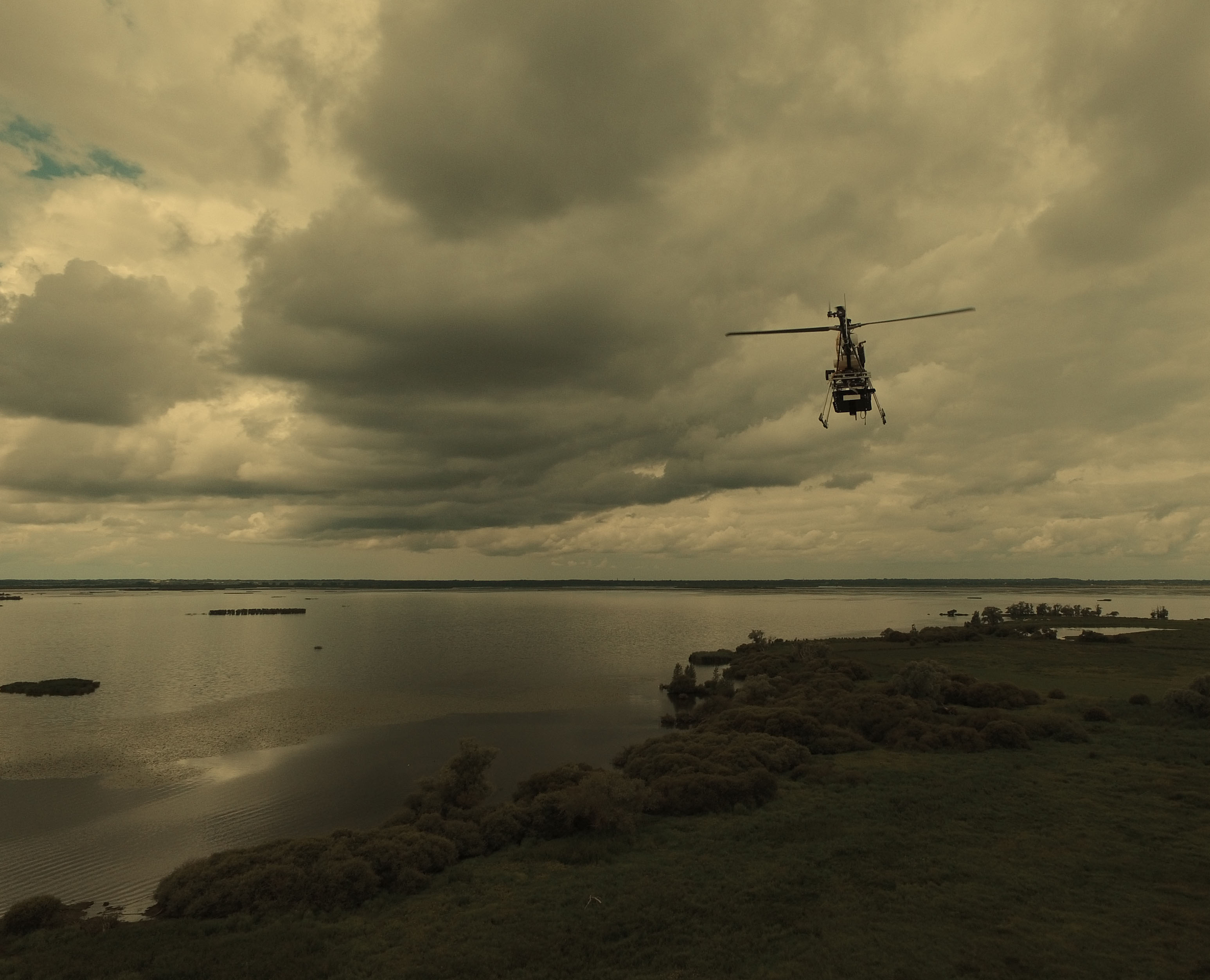
Test of the IFSTTAR drone over Lake Grand-Lieu (Loire Atlantique, Photo Ifsttar)
The technical development of the sensor (wavelength selection, influence of natural processes on the measurements ...) and of the drone system (implementation of an adaptive platform for supporting the measuring equipments) are conducted on 2 main study sites. The first one is the PLANAQUA experimental platform which provides all the required facilities to carry out tests of the sensor on a range of aquatic systems, from microcosm to macrocosm.
The second study site is Lake Champs-sur-Marne, where the sensor can be tested in real conditions of application. Based on the data set collected in Lake Champs-sur-Marne, a 3D hydrodynamic model, using data from inlake sensors and from the aerial sensor is implemented in order to forecast short-term changes of the spatial dispersion of cyanobacteria in the water body.
More details on Lake Champs-sur-Marne





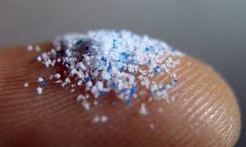
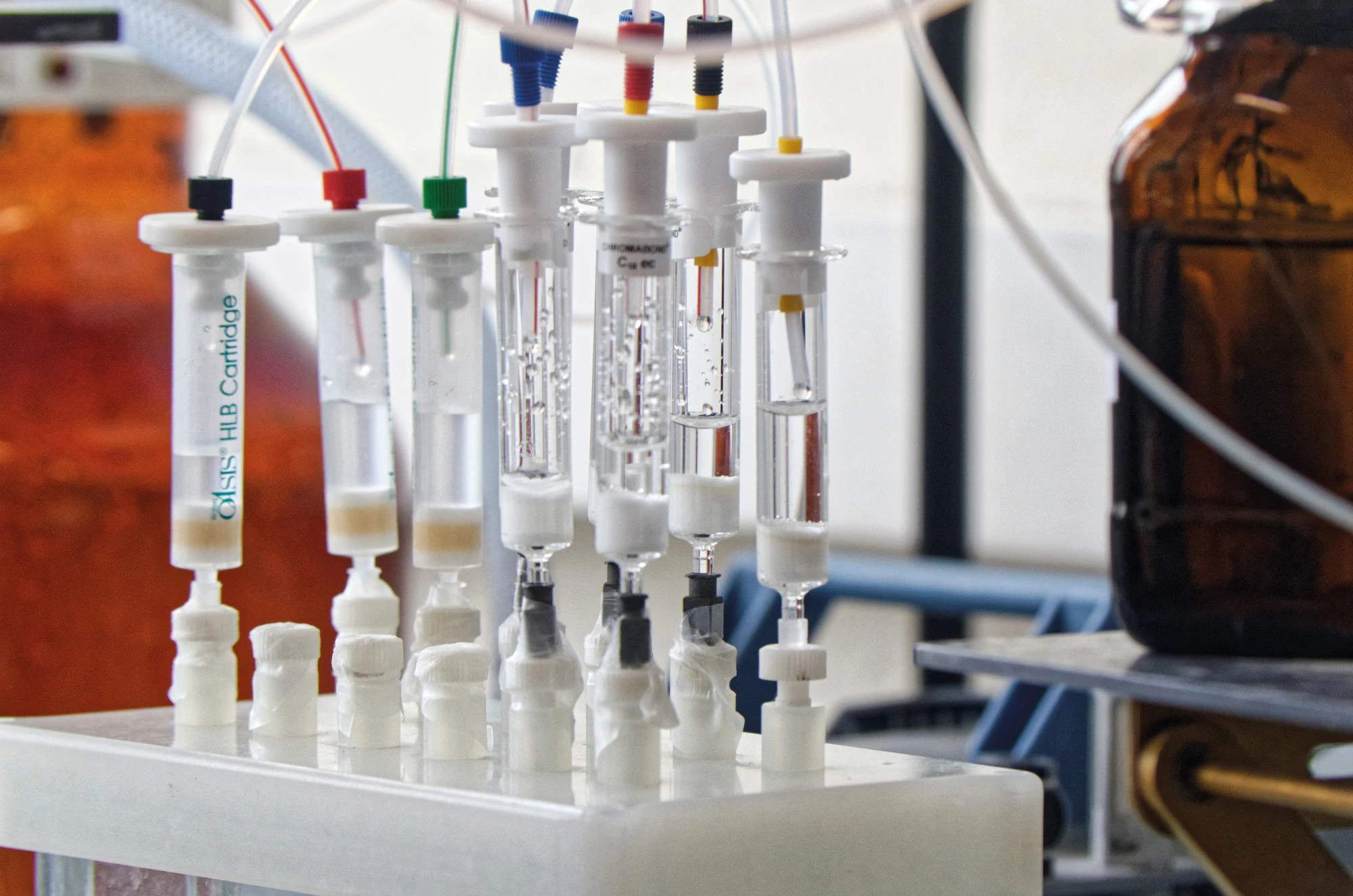
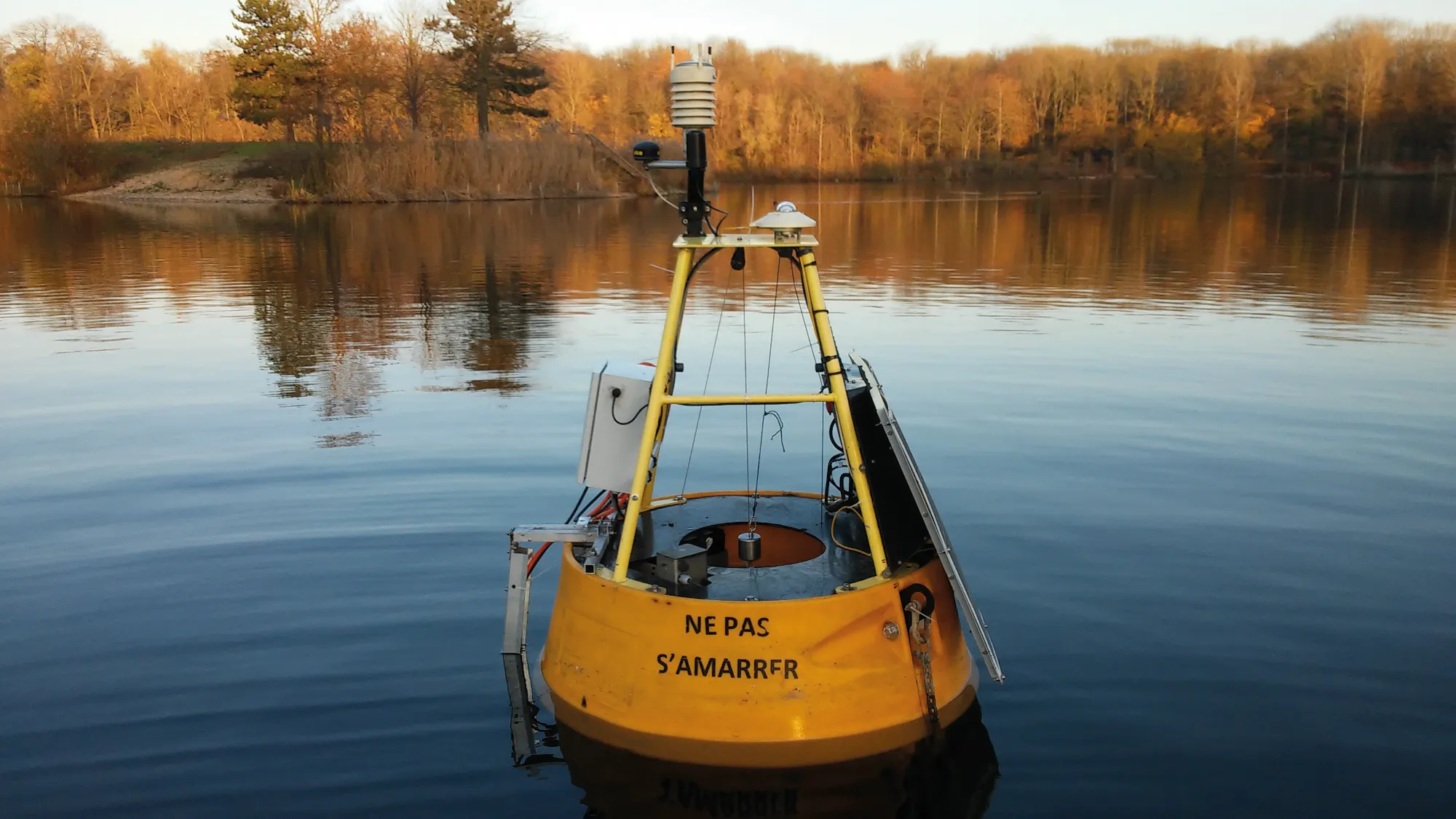
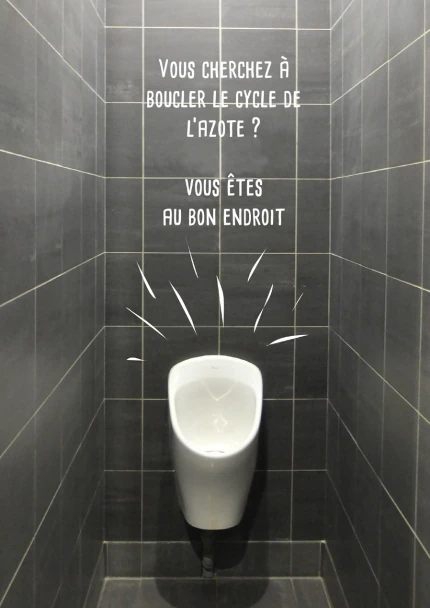
 Productions scientifiques
Productions scientifiques Moyens techniques et équipements
Moyens techniques et équipements Expertise et disciplines
Expertise et disciplines


